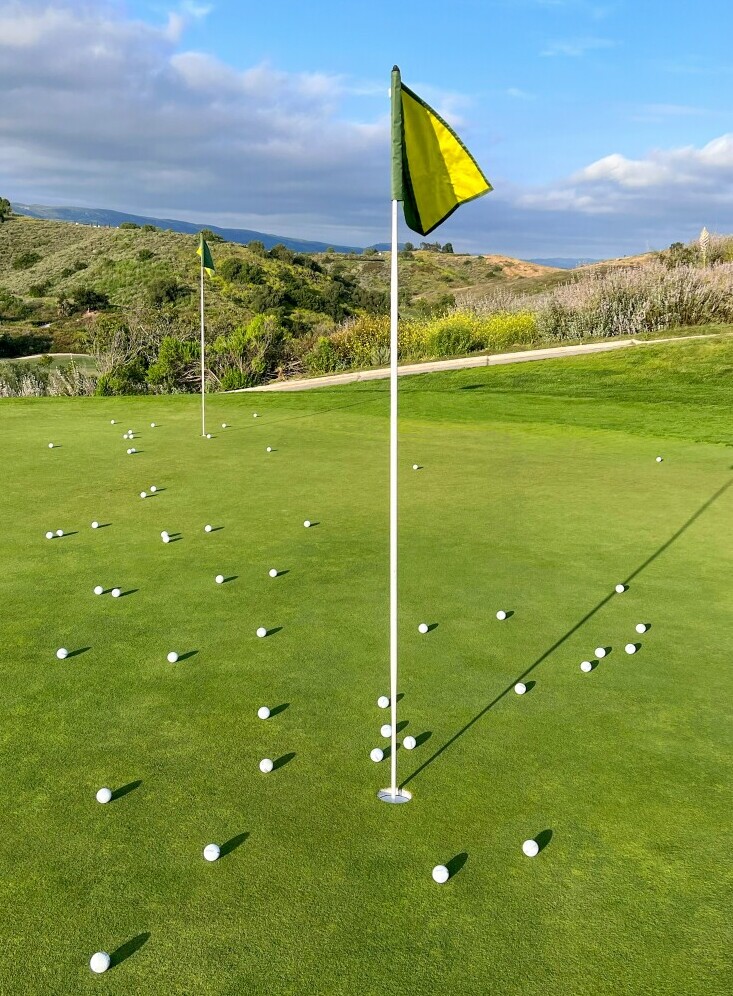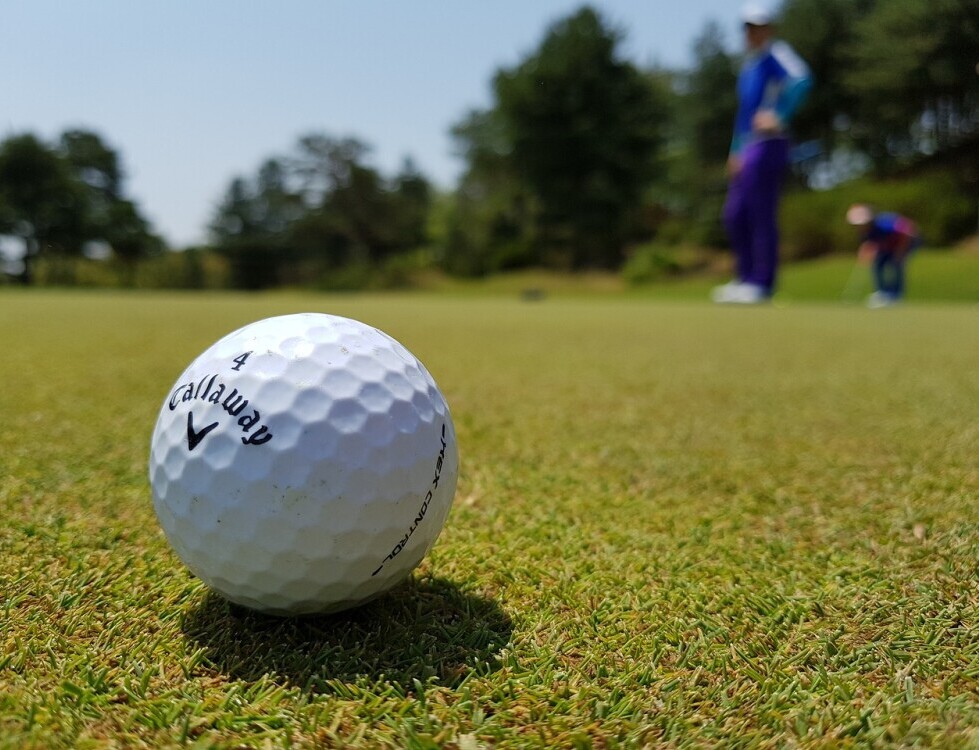Creating The Perfect Golf Practice Schedule For Any Skill Level


Fore! Quick note: a few links here are affiliate links. If you snag gear through them, I earn a small commission — no extra strokes added to your game.
Golf is more than just a game of swings and strokes. It’s a journey of precision where each practice session shapes your skills. The more you practice, the better you get, plain and simple. Consistency in practice builds confidence and brings the kind of precision pros envy. The golf viking is back once again to help you level up your golf game. Let’s talk about making a practice routine that’s going to help you consistently improve your golf score.
Muscle memory plays a game-changing role in golf. When you practice regularly, your body learns how to perform each move automatically. It’s like teaching your muscles to have a mind of their own, letting you focus on strategy while your body takes care of the basics. So the first part is getting the perfect swing through posture, grip, swing, and contact. The next part is consistently hitting that perfect swing every time.
Success stories from the pros drill home the importance of consistent practice. Take a look at any professional golfer’s routine—it’s packed with practice sessions because they know this is where the magic happens. Practice not only hones skills but also boosts mental strength, helping players stay calm even under pressure. Having so much practice under your belt allows you a level of comfort on the golf course.
So heed this advice, don’t just hit the green on weekends. Make practice a part of your regular schedule, and watch your skills improve game by game. A little dedication today will lead to a lot of success tomorrow on any golf course you walk onto. So what makes a good practice routine?
A well-structured practice plan starts with mastering fundamentals. Build your foundation with Mastering the Golf Swing.

Crafting a Customized Golf Practice Routine: Why it Matters
Creating a golf practice routine is essential if you’re serious about upping your game. It’s not just about what you practice but how you organize your practice sessions. A well-structured routine helps improve your technique and measure your progress over time.
For casual players aiming to make the jump to the next level, setting up a regular practice schedule is your first step. Organized practice lets you work on different skills methodically. You focus on driving one day, putting the next, each session contributing more to your overall game. If you can work on your swing throughout the week it will actually pay dividends on the course.
Professional golfers take this to the extreme. Their routines are intense and demand serious commitment, often factoring in mental preparation and physical fitness alongside their time on the course. They have specific goals for each session, along with tools and metrics to track their progress. So not only practice, but deliberate practice to track your progress and consistently challenging yourself is key.
Whether you’re teeing off occasionally or working toward being the next PGA star, understanding how structured practice can reshape your golf journey is key. You’ll identify what areas need more attention and adjust your practices accordingly. Remember, it’s a long-term process—improvement won’t come overnight, but you’ll definitely feel progress with each purposeful session. Let’s talk about setting up the right kind of practice for your skill level.
Make sure to balance technical training with course performance goals. Learn strategies in How to Break 90 in Golf.

Tailoring Practice Schedules for Various Skill Levels
Golf isn’t a one-size-fits-all kind of sport. Whether you’re an amateur just starting out, someone with a bit of experience, or a seasoned player, your practice schedule will look different and should reflect your personal goals. Of course it also depends on how much time and effort you’re willing to put forth in order to get better.
For amateur golfers, it’s all about building a strong foundation. Start with basics like grip, stance, and swing. Spend most of your practice time on drills that foster confidence and help you understand the essentials of the game. Hitting balls with purpose rather than just repeating the same motions is crucial. Getting these things right and consistently will improve your muscle memory and build your skill.
Intermediate players have a different focus. With a solid foundation already in place, it’s time to refine individual techniques and strategies. Introduce more complex drills that challenge your skills and start identifying and fixing bad habits. Focus on getting rid of bad habits in your swing and improving the minor details to help you move to the next level.
By now, minor tweaks to your swing or stance could make a big difference. Adding strategic play into practice sessions lets you manage courses better, turning challenging holes into opportunities. Pinpoint the areas where you need to do better and practice drills that help you improve specifically on those areas.
Expert golfers should keep pushing those boundaries. Their practice focuses on fine-tuning every aspect. Regularly simulate competitive scenarios to test mental toughness and decision-making. Consistent assessment of techniques and staying open to new strategies are part of the process.
Don’t get complacent; keep finding ways to push yourself to get better and better. If you are a more established golfer, then you should have a practice routine that challenges all aspects of your game. Perform drills that require spot on accuracy and ball placement.
The mental game becomes just as important as physical practice and conditioning, requiring exercises like visualization and mental coaching. Not only do you practice your swing motion, but you can also practice visualization techniques and mental fortitude to make you invincible no matter what you encounter on the course.
Each of these levels benefits from a distinct approach to practice, ensuring you focus on the right areas while continuously improving. Evaluate how you currently play and adjust your practice routine to meet your specific needs and targets. Constantly strive to improve all areas of your game.
Consistency requires balance and body control. Pair your schedule with Balance and Stability Drills Every Golfer Should Use.

Weekly Practice Routines: Plans for Every Golfer
Creating a balanced weekly practice routine can make all the difference between stagnation and improvement. The key is making sure each practice session hits on vital areas while being flexible enough to fit your lifestyle.
For amateurs, start simple. Aim for sessions that incorporate both skill-building and a bit of gameplay. Spend time on driving ranges focusing on form, and allocate specific days for short game strategies like putting and chipping. This approach helps develop a well-rounded skill set without feeling overwhelming. You don’t want to lose the fun of golf or else you may wind up quitting. Keep things light and fun but while also striving to get better.
Intermediate golfers should split their week between technical drills and situational play. Allocate days for working on particular skills, such as long irons or bunker shots, then put those skills into practice with mock rounds. This schedule keeps things interesting and challenges your growing abilities. Perform drills that improve all areas of your game while at the same time become aware of situations you may come across on the course.
Experts might mix it up by introducing varied practice settings, including different courses or conditions that replicate tournament play. Dedicate time to simulate up-and-down scenarios, focus on course management skills, and incorporate rest days to optimize performance. Mental exercises like focusing techniques should also be part of the routine.
Incorporating fitness and rest days is crucial for all levels to maintain peak physical condition and prevent burnout. It helps to keep the sessions fresh, the enthusiasm high, and ensures that you’re physically ready for each practice day. Give yourself some days off but keep in mind what you want to accomplish for each practice session.
Everyone benefits from a practice routine that’s thoughtfully crafted to their skill level and needs. It’s not just about how many hours you spend hitting balls but about how effective and deliberate each of those hours is. Let’s wrap up the best way to create a perfect schedule for you.
Dedicate time to working on common swing faults. Start with fixes in The Ultimate Guide for How to Fix a Slice.

Bringing it All Together: Creating Achievable Practice Schedules
Setting up a realistic schedule that matches your skill level is like having a road map to better golf. It’s about crafting a routine that challenges you, keeps you motivated, and fits into your life seamlessly. Fit a practice session in wherever you can in your week. Use a variety of drills and situations to help you improve every aspect of your game.
For amateurs, focus on manageable goals. Aim for a couple of practice sessions per week, and consider mixing solo sessions with group practices to add variety and focus. Joining a community or league can add accountability and keep things fun. Keep things fun, but make sure that you are building the foundation for a solid swing and learn how to swing correctly on a consistent basis.
Intermediate players should aim for more structured routines. Consistency is key here as well, but don’t shy away from experimenting with new drills or techniques to see what works best for you. Balance your practice with course play to gauge improvements in real-time. Get creative with drills or games that challenge your skill set.
Experts might focus on training that incorporates high-level strategy and mental aspects. Use apps and tech to track progress, analyze swing mechanics, and plan for upcoming competitions. Seek feedback from coaches or peers regularly to fine-tune performance. High intensity drills or drills that fix minor details will be key to help you stay in front of your competition.
Overcoming common barriers like time constraints or lack of resources is part of making your schedule work. It’s all about finding creative solutions. Perhaps it means shorter, more focused sessions or utilizing online resources if you can’t always make it to the course. But just like anything, the more time you put into it the more you will get out of it.
In the end, a thoughtfully designed practice schedule isn’t just about becoming a better golfer. It’s about enjoying the process and being constantly curious about how to improve. Keep evaluating and tweaking your routine as you grow. The perfect schedule isn’t static—it evolves with you. I’ll see you out on the golf course…hey, nice shot! Have you been practicing?


